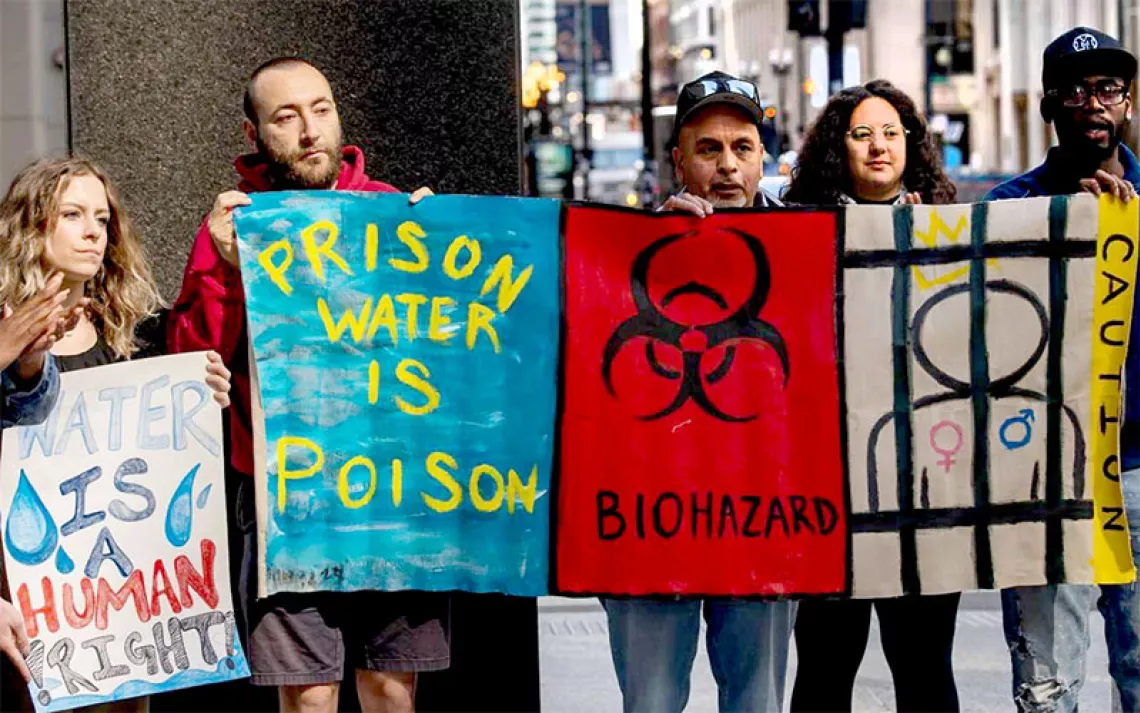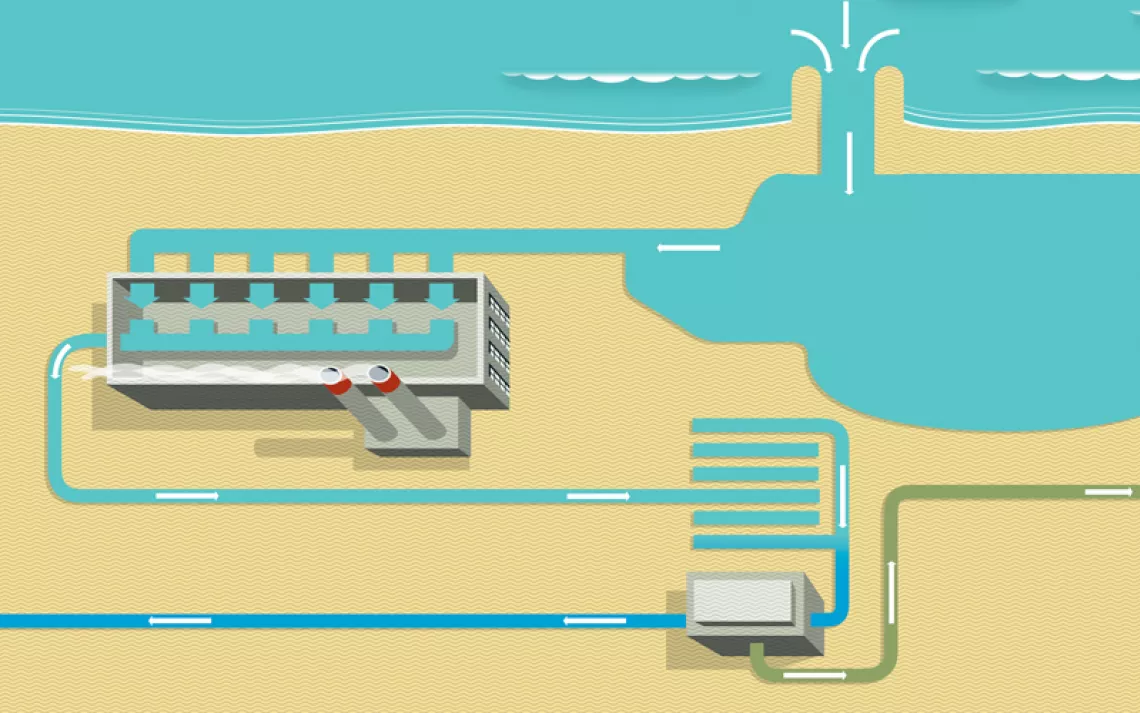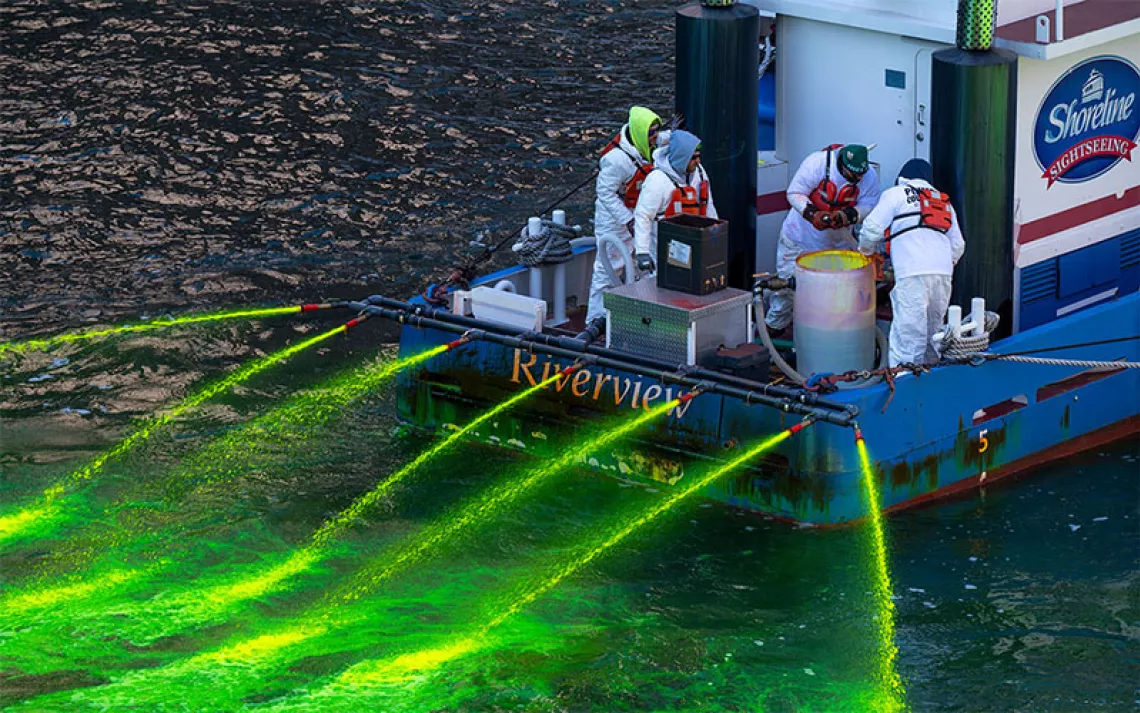It’s Long Past Time to Rewrite Outdated US Mining Laws
The White House and some legislators have a plan to reform the General Mining Act

Water colored from a mine-waste spill at the Animas River near Durango, Colorado. | Photo by Jerry McBride/The Durango Herald via AP, File
On a summer hiking trip high in the San Juan Mountains of southern Colorado, my son, Owen, and I were aimed for a summit deep in the backcountry.
By the time we reached an elevation of about 12,500 feet, our water bottles were empty. We found a small creek and I pulled my water filter from my backpack and began to pump. The stream, no more than a few feet wide, ran swift and cold. Its clarity was almost perfect. Distracted by the triangular profile of the peak we would soon be climbing, I failed to notice a strange white crust that coated the rocks along the bank.
I handed Owen the bottle. “This doesn’t smell right,” he said.
The liquid inside looked clear, so I took a small sip. The water was tinged with a sulfurous smell and tasted of metal and grit. I spat it out immediately.
I assumed our high, remote location guaranteed that the water was fit for human consumption. But I was wrong. Above us, in the alpine recesses from which the tiny creek flowed, heaps of ore tumbled down great, rust-colored chutes. A glance at my topographic map revealed a host of mines scattered across the range, many dating to the gold and silver rush that gripped much of the American West in the late 1800s and early 1900s. The water in my bottle, like the water flowing through hundreds of creeks across Colorado and the rest of the United States, carried the toxic burden of those old leaking mines.
Today, over half a million abandoned hardrock mine sites litter the landscape of the United States, poisoning ecosystems, blighting public lands, and threatening human health. From the mountaintop coalfields of Appalachia to the uranium quarries of the Four Corners, the scale of the ecological devastation is massive—and so are the projected costs of fixing it. A 1993 report from the Mineral Policy Center estimated that reclaiming more than 350,000 of the most polluted and hazardous sites would cost between $32 billion and $72 billion at that time—or between $67 and $152 billion today.
The problem, critics say, can be traced largely to a single piece of antiquated and ineffective legislation, the General Mining Act of 1872. The law, adopted in response to the extractive free-for-all that defined the Gold Rush era, has changed little since its passage during the administration of Ulysses S. Grant. The law allows a host of players, from multinational companies to individual prospectors, to stake placer mining claims on public lands without environmental review or public hearings. The process requires little more than a small bit of paperwork, a nominal processing cost and an annual fee on par with an average trip to the grocery store.
Although more recent laws such as the Federal Lands Policy and Management Act of 1981 require mining companies to comply with myriad state and federal laws including the Clean Water, Clean Air, and Endangered Species Acts, the 19th-century law does not require mining companies to pay royalties to the government for the metals and minerals they unearth. Nor does it require them to prove they have adequate financial resources to clean up their messes when they are done.
In September, the Biden administration announced its intent to reform the General Mining Act. A report from the Interagency Working Group—a coalition of federal agencies including the EPA, the Food and Drug Administration, and the Departments of Energy and the Interior—offered recommendations on a potential overhaul. To make cleanup of abandoned mines easier, the working group recommended limiting the liability faced by organizations—so-called good samaritans—that voluntarily undertake cleanup and closure of abandoned sites. Under current law, any outfit that seeks to remediate a mine is liable for damage that their work may cause.
That perverse disincentive was on display in 2015, in the aftermath of the Gold King Mine disaster near Silverton, Colorado. The calamity occurred when the EPA, working in conjunction with a private company called Environmental Restoration LLC to remediate acid drainage from an abandoned mine, accidentally triggered the release of a toxic soup containing cadmium, lead, arsenic, and beryllium. Millions of gallons of waste flowed into the Animas River, turning its aquamarine waters an otherworldly orange. Because the company that had excavated the mine was long defunct, plaintiffs filed suit against the EPA and Environmental Restoration. In 2022, the EPA reached a settlement with the State of New Mexico for $32 million.
In addition to making cleanup a less risky proposition, the working group report also recommends incentivizing mining on existing mine sites. According to the report, “re-mining” would not only allow more efficient use of land but also could present opportunities “to address existing contamination and ongoing pollution discharges.”
The Biden administration’s recommendations are not merely concerned with fixing mine damage. The administration is also looking at ways to increase and streamline the permitting process for the domestic mining of rare earth metals and other raw materials needed for the renewable energy transition. “The rapid buildout of a clean energy economy is fueling a significant increase in demand for responsibly sourced critical minerals that power everything from consumer electronics to electric vehicle batteries,” reads the administration’s announcement of its proposed reforms.
Changes to the current law won’t come easily. Earlier this year, Democratic senators Ed Markey of Massachusetts and Martin Heinrich of New Mexico and House Natural Resources Committee chair Raúl Grijalva of Arizona introduced the Clean Energy Minerals Reform Act. But the bill has been stuck in limbo—an unfortunate replay of earlier attempts to update the antiquated law. Since 2000, more than a half dozen mining reform bills have been introduced. All died in Congress, thanks in large part to aggressive lobbying campaigns by the mining industry and perennial obstruction from leaders in mining states, notably West Virginia Democratic senator Joe Manchin, who has reaped massive profits from the coal industry.
Three of the failed bills, the Hardrock Mining and Reclamation Acts of 2015, 2017, and 2019, authored by former New Mexico Democratic lawmaker Tom Udall, would have increased royalties and required mine companies to submit proof to the federal government that they are financially able to pay for any damages to land and water resulting from their mining activities.
“If mining companies want to profit from the American people’s public land, then they need to pay their fair share and clean up the mess they leave behind,” then-senator Udall said after the introduction of his bill in 2019. “But since 1872… the hardrock mining industry has enjoyed an outrageous sweetheart deal, unlike any other industry, where the miners get the gold and the taxpayer gets the shaft.”
Our lawmakers once again have the chance to rewrite the script and protect the nation’s landscapes and waterways. If Congress can escape the rancor and dysfunction that has gripped it for much of the last year, lawmakers can pass the Clean Energy Reform Act and take a long overdue step toward cleaning up mining’s toxic legacy that lingers on the land and on the lips in some of our most beautiful places.
 The Magazine of The Sierra Club
The Magazine of The Sierra Club



